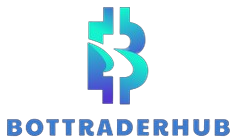The cost of acquiring a trading bot can vary significantly depending on several factors. This article dives into the different pricing models associated with bots, from free and open-source options to premium, commercially developed solutions. Understanding the cost spectrum empowers potential users to make informed decisions based on their budget and needs.
Types of Trading Bots
Trend-Following Bots
Trend-following bots are designed to identify and capitalize on prevailing market trends. These bots analyze historical price data and technical indicators to determine the direction of the trend. Once a trend is identified, the bot executes trades in the direction of the established trend. This strategy is particularly effective in markets characterized by sustained price movements.
Arbitrage Bots
Arbitrage bots exploit price differentials between different exchanges or financial instruments. These bots are programmed to simultaneously buy and sell assets in different markets to capitalize on the price gaps. Arbitrage opportunities arise due to delays in price adjustments across exchanges or inefficiencies in asset pricing. Arbitrage bots play a crucial role in maintaining market efficiency by swiftly correcting these disparities.
Market-Making Bots
Market-making bots aim to profit from the spread between bid and ask prices by facilitating liquidity in the market. These bots continuously place limit orders on both sides of the order book, providing a ready market for buyers and sellers. By profiting from the bid-ask spread, market-making bots contribute to price stabilization and increased market efficiency.
Benefits of Using Trading Bots
Trading bots offer a multitude of advantages to both novice and experienced traders, enhancing their ability to navigate the complex and dynamic world of financial markets. Here’s a comprehensive list of the benefits:
- Time Efficiency: Trading bots execute trades swiftly, eliminating delays caused by human hesitation and ensuring timely responses to market changes.
- Emotion Elimination: By operating on predefined algorithms, trading bots remove emotional factors from decision-making, maintaining a disciplined approach to trading.
- Diversification: Trading bots can simultaneously execute trades across multiple markets and assets, providing a level of diversification that would be challenging for an individual trader to achieve manually.
- 24/7 Market Monitoring: Unlike human traders, trading bots can analyze market data and execute trades at any time, facilitating 24/7 market monitoring and enhancing opportunities for profit.
These benefits collectively contribute to the appeal and growing popularity of trading bots among individuals seeking efficiency, precision, and a competitive edge in the financial markets.
Factors Influencing Trading Bot Prices
The pricing of trading bots is influenced by various factors, reflecting the sophistication, features, and reputation of the software. Here are key considerations affecting trading bot prices:
Functionality and Features
- Algorithm Complexity: Advanced algorithms and intricate trading strategies often come with a higher price tag.
- Risk Management Tools: Bots equipped with advanced risk management features may be priced higher due to the added value in mitigating potential losses.
- Backtesting Capabilities: Trading bots offering robust backtesting functionalities to assess historical performance may be priced at a premium.
Customization Options
- Flexibility: Bots that allow extensive customization to align with individual trading preferences may have varied pricing structures based on the level of flexibility provided.
- Technical Indicators: The availability of a wide range of technical indicators for customization can impact the overall cost.
Reputation of the Provider
- Market Standing: Established and reputable bot providers may charge higher prices, reflecting their track record, reliability, and customer satisfaction.
- Customer Support: Quality customer support services can contribute to the perceived value of the trading bot, influencing pricing.
Integration with Exchanges
- Exchange Compatibility: Bots that seamlessly integrate with multiple exchanges may come at a higher cost due to increased functionality and versatility.
- Liquidity Access: Bots offering access to a broader range of liquidity pools may be priced higher, especially if they facilitate trading across various markets.
Understanding these factors is crucial for traders when evaluating trading bots, ensuring that the chosen software aligns with their trading goals, preferences, and budget constraints.
Pricing Models in the Trading Bot Industry
To provide a clear overview of the diverse pricing models in the trading bot industry, let’s break down the information into a concise table and follow it with detailed explanations:
| Pricing Model | Description | Pros | Cons |
| One-Time Purchase | Traders buy the trading bot outright, making a single payment for a perpetual license. | Fixed upfront cost | Limited ongoing support and updates |
| Subscription-Based | Traders pay regular fees, often monthly or annually, for continuous access to the trading bot, including updates and support. | Flexibility in payment | Cumulative costs over time |
| Profit-Sharing | Users pay a percentage of their profits to the bot provider, aligning the provider’s success with the trader’s profitability. | Lower upfront costs | Higher costs with increased profits |
- One-Time Purchase: Traders opting for a one-time purchase model make a fixed upfront payment for a perpetual license of the trading bot. While this provides cost certainty, it may lack ongoing support and updates that could be crucial for adapting to evolving market conditions.
- Subscription-Based: In the subscription-based model, traders pay regular fees, ensuring continuous access to the trading bot along with updates and support. This offers flexibility in terms of payment frequency, but users should consider the cumulative costs over an extended period.
- Profit-Sharing: For those seeking lower upfront costs, profit-sharing models are available. Traders pay a percentage of their profits to the bot provider, aligning the provider’s success with the trader’s profitability. However, it’s essential to be aware that as profits increase, so do the associated costs.
In conclusion, choosing the right pricing model depends on individual preferences, budget considerations, and the desired level of ongoing support. Traders should carefully evaluate these factors to make an informed decision that aligns with their trading goals and financial constraints.
Realistic Costs of Trading Bots
When delving into the realm of trading bots, understanding the realistic costs involved is paramount. The initial investment in a trading bot is not solely confined to the upfront purchase or subscription fee. Traders should consider additional expenses such as customization, integration with their chosen exchanges, and potentially necessary training to optimize the bot’s performance.
Ongoing expenses are a crucial aspect often underestimated. Subscription fees, transaction costs incurred during trades executed by the bot, and any potential hidden charges can contribute significantly to the overall cost of utilizing a trading bot over time. It’s imperative to factor in these ongoing costs to make a more accurate assessment of the bot’s affordability and feasibility within one’s budget.
Moreover, the dynamic nature of financial markets introduces variability in costs. Market conditions and volatility can influence the efficiency and effectiveness of a trading bot. Understanding these nuances is vital for traders, as it allows for a more realistic evaluation of the costs associated with integrating and maintaining a trading bot in their investment strategy.
Challenges and Risks Associated with Trading Bots
Trading bots, while offering numerous benefits, come with their fair share of challenges and risks. Understanding and mitigating these factors are essential for a successful automated trading experience.
Technical Glitches
- Software Bugs: Like any technology, trading bots are susceptible to software bugs that can lead to unexpected behavior and potentially result in financial losses.
- Connectivity Issues: Problems with internet connectivity or issues with the integration between the bot and exchanges may disrupt trading operations.
Market Volatility
- Unpredictable Market Movements: Rapid and unpredictable market movements can challenge a bot’s algorithms, leading to suboptimal decision-making.
- Flash Crashes: Sudden and sharp market declines, known as flash crashes, can trigger unintended consequences for trading bots.
Security Concerns
- Hacking and Cybersecurity: As automated systems, trading bots are potential targets for hackers. Security breaches can lead to unauthorized access and compromised trades.
- Exchange Vulnerabilities: Vulnerabilities in the exchanges themselves can expose trading bots to risks, especially if the exchange lacks robust security measures.
Navigating these challenges requires a proactive approach. Traders should regularly update their bot’s software, monitor market conditions, and implement robust cybersecurity measures to minimize the impact of technical glitches, market volatility, and security concerns. Additionally, maintaining a cautious and adaptive strategy in response to evolving market conditions is crucial for the long-term success of trading bot usage.

